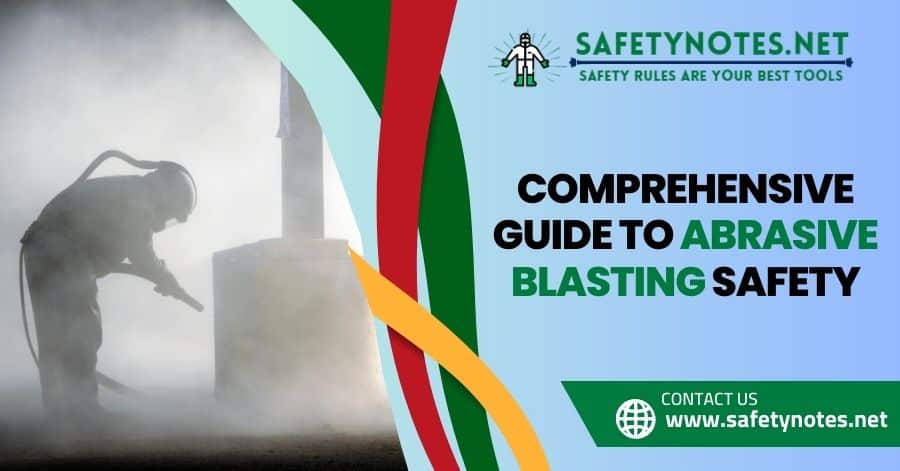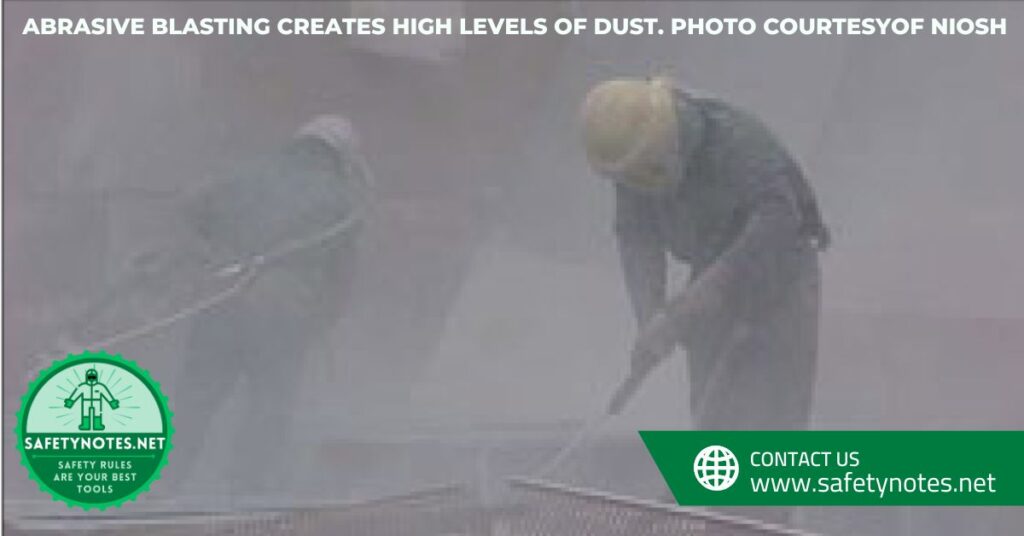
Comprehensive Guide to Abrasive Blasting Safety: Protecting Workers from Hazards**
1. Introduction
1.1 What is Abrasive Blasting?
Abrasive blasting, often simply referred to as sandblasting, is a process where compressed air or water propels abrasive material against a surface. This technique is used for various purposes, such as cleaning objects, removing burrs, applying textures, or preparing surfaces for paint or other coatings. But why is it so crucial? Let’s dive in.
1.2 Importance of Safety in Abrasive Blasting
Safety isn’t just a buzzword; it’s a necessity. When it comes to abrasive blasting, the stakes are high. The process can expose workers to hazardous dust levels, toxic metals, and other dangers. Ensuring safety isn’t just about compliance; it’s about safeguarding human lives. Think about it: would you risk your well-being for a job? Neither should anyone else.
2. Understanding Abrasive Blasting Materials
2.1 Definition and Use Cases
Abrasive materials are the heart of the blasting process. They do the “heavy lifting,” so to speak, by directly impacting the surface. The choice of abrasive material can vary based on cost, job specifications, the environment, and, importantly, worker health.
2.2 Commonly Used Abrasive Materials
From the sands of time (literally) to modern alternatives, the range of abrasive materials is vast. Common choices include:
- Silica sand (crystalline)
- Coal slag
- Garnet sand
- Nickel slag
- Copper slag
- Glass (either beads or crushed)
- Steel shot and grit
- Specular hematite (iron ore)
2.3 Alternative, Less Toxic Blasting Materials
Safety first, right? That’s why many industries are shifting towards less toxic blasting materials. Some of these include:
- Ice cubes (cool, isn’t it?)
- Dry ice
- Plastic bead media
- Sponge
- Sodium bicarbonate (yes, baking soda!)
- Biodegradable materials like ground walnut shells and corn cob
- High-pressure water
3. Health Hazards Associated with Abrasive Blasting
3.1 The Dangers of Dust and Noise
Imagine being surrounded by a cloud of dust every day. Not pleasant, right? Abrasive blasting can produce high levels of dust, posing significant health risks. And let’s not forget the noise. The high decibel levels can lead to substantial hearing loss. So, next time you see someone blasting without ear protection, maybe give them a nudge?

3.2 Toxic Materials in Abrasive Material and Surfaces
It’s not just about the dust. The very materials used for blasting, as well as the surfaces being blasted, can contain toxins. For instance, lead paint, silica, and other materials can be hazardous when inhaled or ingested.
3.3 Health Implications of Specific Abrasive Materials
Different materials, different risks. For example:
- Silica sand can lead to silicosis, lung cancer, and other respiratory issues.
- Coal slag and garnet sand, based on preliminary tests, might cause lung damage similar to silica sand.
- Materials like copper slag, nickel slag, and glass also have potential lung damage risks.
- On the brighter side, steel grit and shot pose a lesser threat.
4. Protecting Workers from Abrasive Blasting Hazards
4.1 Identifying and Addressing Hazards Before Work
Before the blasting begins, it’s essential to recognize potential hazards. Employers should take the initiative to identify these risks and assign a knowledgeable individual to address them. This person should be trained to recognize hazards and have the authority to take corrective action swiftly.
4.2 Engineering Controls
4.2.1 Substitution
Why use harmful materials when there are safer alternatives? Opt for less toxic abrasive blasting materials whenever possible.
4.2.2 Isolation and Containment
Isolating the blasting operation can protect other workers. Using barriers, curtain walls, blast rooms, or cabinets can be effective. For non-enclosed operations, restricted areas are a must.
4.2.3 Ventilation
A proper exhaust ventilation system can capture dust, making the environment safer for workers.
4.3 Administrative Controls
4.3.1 Routine Cleanup and Maintenance
Regular cleanup is essential. Using wet methods or HEPA filtered vacuuming can minimize toxic dust accumulation. And remember, using compressed air for cleaning can create more dust.
4.3.2 Scheduling and Worksite Management
It’s best to schedule blasting when fewer workers are on site. Also, avoid blasting on windy days to prevent the spread of hazardous materials.
4.3.3 Personal Hygiene Practices
Maintaining personal hygiene is crucial. Prohibit eating, drinking, or using tobacco in blasting areas. Provide wash stations for workers and ensure they change out of contaminated clothes before breaks.
4.4 Personal Protective Equipment (PPE)
4.4.1 Respiratory Protection
A proper respirator can protect against dust. Ensure it covers the head, neck, and shoulders to protect from rebounding abrasive.
4.4.2 Other PPE
Other essential PPE includes hearing protection, eye and face shields, helmets, leather gloves, aprons, and safety shoes.
5. Worker Training and Hazard Communication
5.1 Importance of Training in Abrasive Blasting
Training isn’t just about compliance; it’s about safety. Workers should be trained on the health and safety hazards of blasting, the use of controls, personal hygiene practices, safe work practices, and the correct use of PPE.
5.2 Understanding Safety Data Sheets (SDS)
Manufacturers must provide health hazard information on the blasting materials on SDS. It’s essential to obtain and understand this information to ensure safety.
5.3 OSHA’s Guidance and eTool Resources
For a deeper understanding, refer to OSHA’s guidance document on abrasive blasting and their eTool resources. These tools provide valuable insights into ensuring safety during abrasive blasting operations.
6. Conclusion
6.1 The Importance of Continuous Learning and Adaptation
Safety in abrasive blasting isn’t a one-time task. As technologies evolve and new research emerges, our understanding of best practices will change. It’s essential for industry professionals to stay updated, adapt to new methods, and always prioritize worker safety.
6.2 Encouraging a Culture of Safety
A safe work environment isn’t just about following regulations. It’s about fostering a culture where every individual understands the importance of safety and actively participates in maintaining it. When everyone is on board, from top management to the newest recruit, safety becomes a way of life.
7. FAQs
Q: What is the main health risk associated with silica sand in abrasive blasting?
A: Silica sand, when used in abrasive blasting, can lead to silicosis, a lung disease, and other respiratory issues. Prolonged exposure can also increase the risk of lung cancer.
Q: How can employers reduce the risk of lung damage from abrasive blasting?
A: Employers can opt for less toxic abrasive materials, ensure proper ventilation, and provide workers with appropriate respiratory protection.
Q: Why is it important to avoid blasting in windy conditions?
A: Windy conditions can spread hazardous materials over a larger area, increasing the risk of exposure to workers and even those outside the immediate blasting area.
Q: What are the benefits of using less toxic abrasive blasting materials?
A: Using less toxic materials reduces the health risks associated with abrasive blasting, ensuring a safer environment for workers and reducing potential liabilities for employers.
Q: How does OSHA support employers in ensuring abrasive blasting safety?
A: OSHA provides guidelines, standards, and resources like the Safety Data Sheets (SDS) and eTool resources to help employers understand and implement safety measures.
Q: What is the significance of the OSHA Occupational Noise standard in abrasive blasting?
A: The OSHA Occupational Noise standard emphasizes the importance of protecting workers from high noise levels during abrasive blasting, which can lead to substantial hearing loss.
Q: Why is personal hygiene crucial in abrasive blasting areas?
A: Maintaining personal hygiene helps reduce the risk of ingesting or inhaling hazardous materials. It’s essential to prevent contamination and ensure workers’ overall well-being.
Q: How can employers ensure that the abrasive material they are using is safe?
A: Employers should refer to the manufacturer’s Safety Data Sheets (SDS) for health hazard information on the abrasive blasting material they are using.
Q: What are the primary means of preventing exposure to airborne hazards during abrasive blasting?
A: The primary means include engineering controls like substitution, isolation, containment, and ventilation, along with administrative controls and the use of personal protective equipment.
Q: How can workers protect themselves from the rebounding abrasive during blasting?
A: Workers should use appropriate personal protective equipment, including helmets, face shields, and full-body coverings, to protect against rebounding abrasive.
